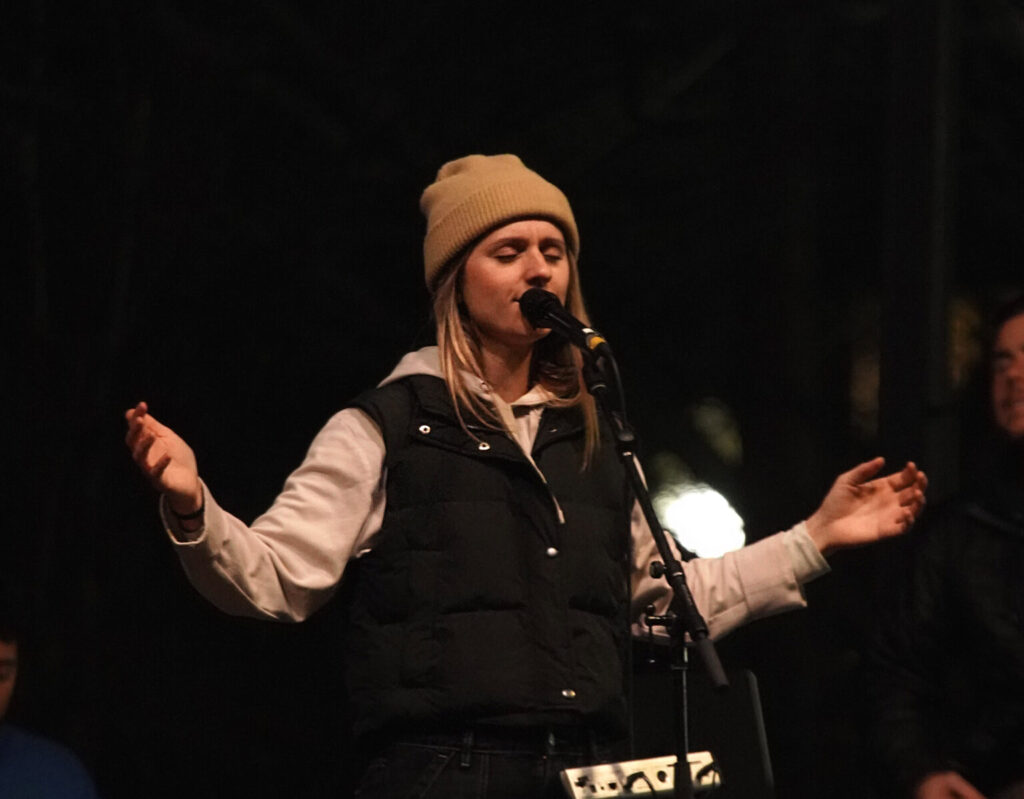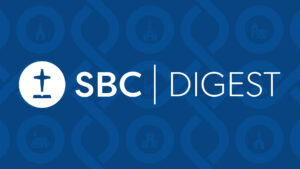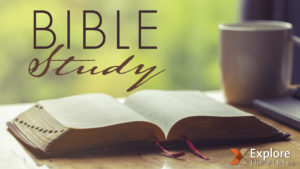
WACO, Texas (BP) — In 1945, a group of Baylor students began leading a series of worship gatherings that came to be known as the Waco Youth Revivals. The meetings sparked a nationwide Youth Revival Movement that is registered as one of the largest student-led revivals in American history.
Today, FM72 leaders believe God can “do it again.”
“The components of God doing it again are prayer and more prayer, in the enthusiastic aspect and the expectancy,” said Drew Humphrey, who serves as FM72’s chief of operations and college pastor at Highland Baptist Church. “We’re ready for God to do it again. … People are fired up in prayer. People are fired up in unity. People are fired up in outreach. So, why not again? Let’s do it again. Why not us? Why not now?”
FM72 began in 2018 as a 72-hour worship and prayer gathering on Fountain Mall — the heart of Baylor’s campus. Beyond nightly worship gatherings at 8 p.m. from Sunday to Wednesday, the defining symbol of the meeting is a large prayer tent, which is open for 72 consecutive hours to anyone who wants a space to pray.
The organization traces its spiritual origins back to the Waco Youth Revivals of the 1940s and 1950s. Humphrey calls it a “proof of concept” for FM72. From prayers that God would “do it again” to FM72’s rallying cry (“I’d Rather Have Jesus”), much of today’s language is built on yesterday’s revivals.
“They’re looking at this time coming out of World War II where everybody’s focused on economic prosperity,” said Dr. Charles Ramsey, who serves as Baylor’s director for campus ministries and church connections. “And in that is this movement that says, ‘No, no, no — wait a minute. Without Christ, all of that is meaningless. I’d rather have Jesus.’”
Former Baylor student Bruce McIver documented his experience in the Waco Youth Revivals in his book, “Riding the Wind of God.” He details the history of a student body deeply shaped by two experiences: World War II and prayer.
“You have all these students who had been former military, who are incredible leaders,” Ramsey said. “It was amazing to see them kind of have vision. … They’d hand out leaflets. They’d take out an ad in the newspaper. And people would start gathering, and what would they do? Well, they’d pray, they’d sing and they’d take turns preaching.”
Despite beginning around the same time as Billy Graham’s ascent to national popularity, the Waco Youth Revivals weren’t the story of a single charismatic leader. Seven or eight different students would speak at meetings — including Jackie Robinson, a two-time All-American basketball player; Howard Butt Jr., heir to the H-E-B empire; and Reiji Hoshizaki, a Japanese-American who preached through hecklers and death threats amid the deep anti-Japanese prejudice in the aftermath of Pearl Harbor.
It was in these settings of an unlikely community that the Waco Youth Revivals flourished. McIver writes that the “divine electricity” of those meetings was in no small part due to its involvement with the Waco community. On one occasion, a group of students paraded over 20 blocks from campus to the prayer tent, accompanied by a motorcycle escort, a large banner and the songs of the faithful. The march was 600-strong by the time it reached the prayer tent. Nightly revival attendance soon “soared” beyond 3,000.
“It was an atmosphere of electricity and excitement,” Ralph Langley, one of the revival leaders, said in “Riding the Wind of God.” “There’s always something exciting about something new that people think and feel is God-blessed. There was a kind of charisma in some of those involved, charisma in the healthiest sense of the word, of holy expectancy. There was a holy hush — a group of kids leading a group of kids, with adults around … quietly affirming them with an amen from the heart.”
The movement grew far beyond Waco, sparking similar revivals across the country for decades to come. From post-Pearl Harbor Hawaii to Atlanta, it coincided with evangelists like Graham and carried into the Jesus Movement, which was immortalized in TIME Magazine. With the number of religiously unaffiliated college students tripling over the past 30 years, leaders of revival efforts like FM72 hope the spirit of 1945 will visit Waco again.
“I think it’s 100% worth aspiring to, and I think people are aspiring to it,” Ramsey said. “Movements are built on the faithfulness of individuals who bond together in community. When small expressions of community start coming together and being faithful in the small things, I think there’s kind of this ignition that happens.”
Humphrey hailed the power of God through prayer as the only thing that could create such a revival. He quoted Florida pastor and revival leader John Kilpatrick as calling prayer “the premium you pay for revival.”
“God never puts revival on sale,” Humphrey said. “He never cuts it 50% or 75%. It will cost this generation what it cost other generations, and that’s prayer.”
McIver wrote of prayer as the lifeblood of the Waco Youth Revivals. He tells one story of a prayer meeting the night before Robinson was scheduled to preach. The future Olympian, “overwhelmed with the responsibility facing him,” abandoned his kneeling posture to lie prostrate on the floor.
“I still remember verbatim his prayer: ‘O, Lord, use me. Use me as I try to preach. But Lord, if you can’t use me, let me die, for I’d rather be dead than unusable,’” McIver wrote. “When we rose to leave, I lingered for a moment and saw a puddle of tears where he had prayed with his face on the concrete floor. There’s no need for me to tell you that God did use him then — and for more than half a century that followed.”
The past two years have seen increased visibility of student prayer movements, from the Asbury Revival to student-led worship services at Baylor’s own Elliston Chapel. In late February, the Collegiate Day of Prayer marked another major event in the Waco prayer movement. Throughout every meeting, the message has remained consistent with the Oswald Chambers quote declared again at the Collegiate Day of Prayer: “Prayer does not fit us for the greater works. Prayer is the greater work.”
Beginning Sunday night, thousands of students will gather on Fountain Mall for FM72. The branding is more contemporary, as is the music, and the meetings have migrated from empty lots downtown to the center of campus. But the message and prayers of those in attendance will sound a lot like their predecessors: “I’d Rather Have Jesus.”
“We talk about the prayer meetings because they were wonderful,” Butt said of the prayer gatherings leading up to the Waco Youth Revivals. “They were times of very earnestly seeking God’s face and celebrating his love and grace and power … and, in confidence, believing that he was going to give us a revival at Baylor.”
This story first appeared in the The Baylor Lariat.















